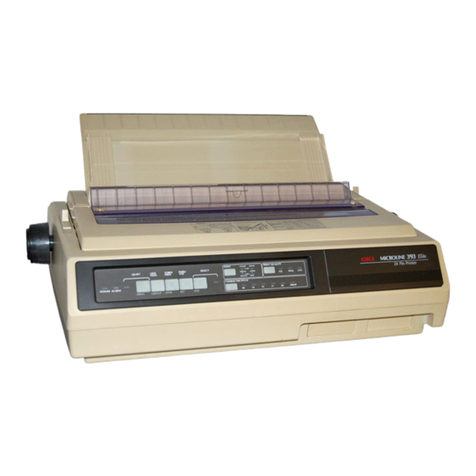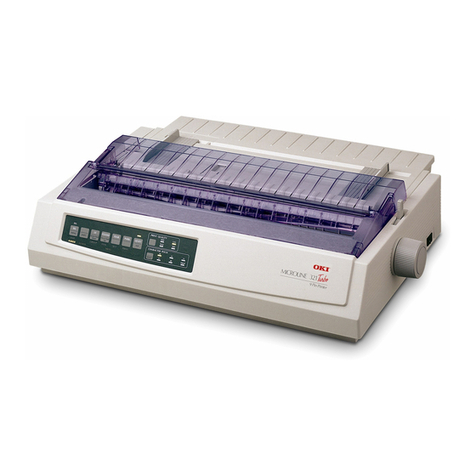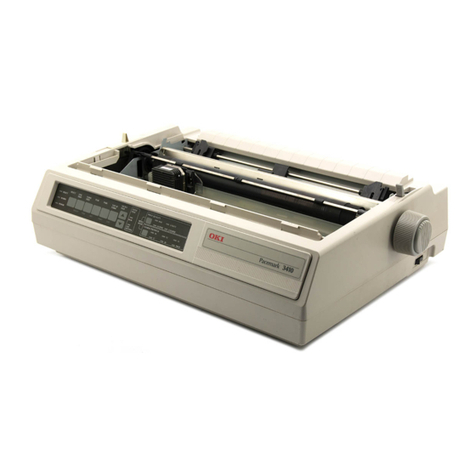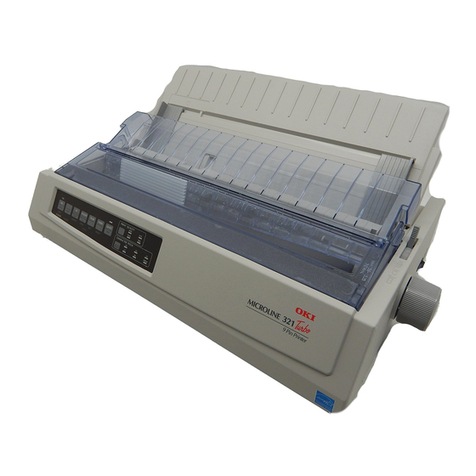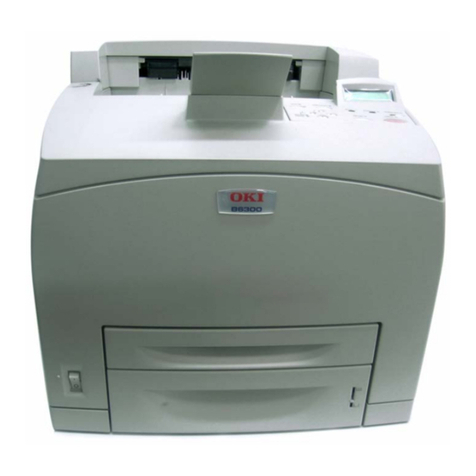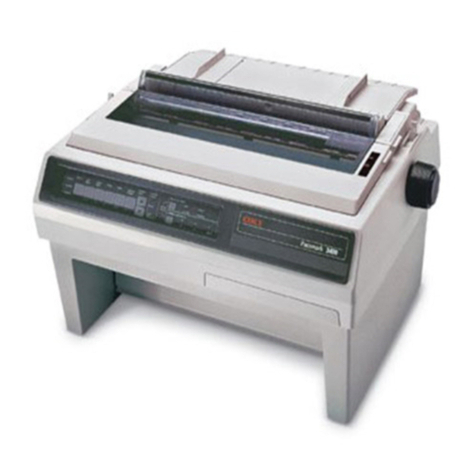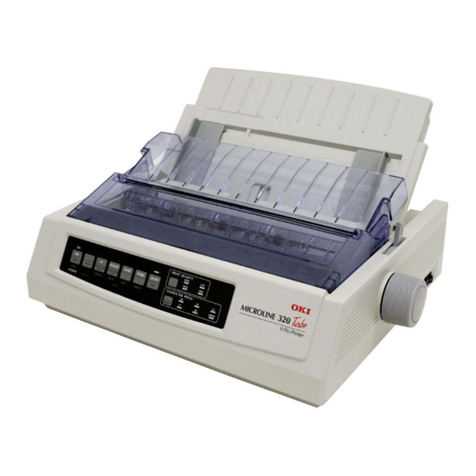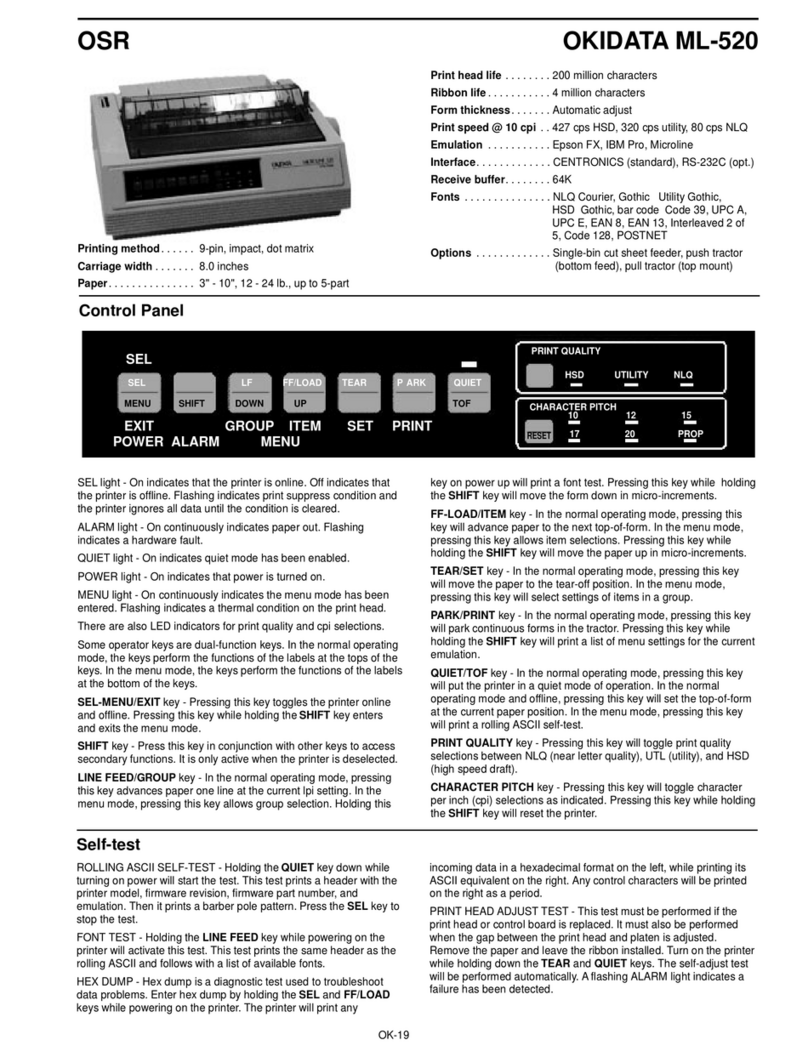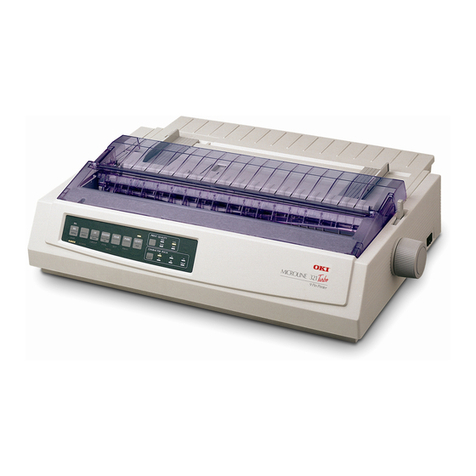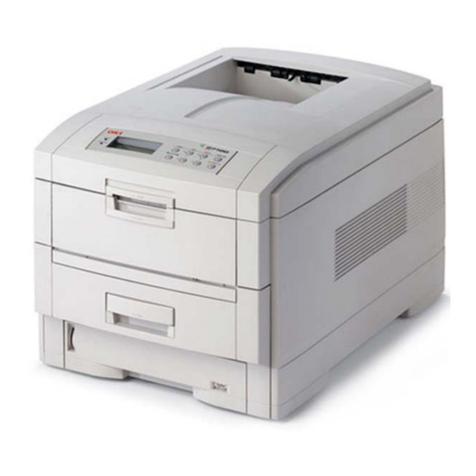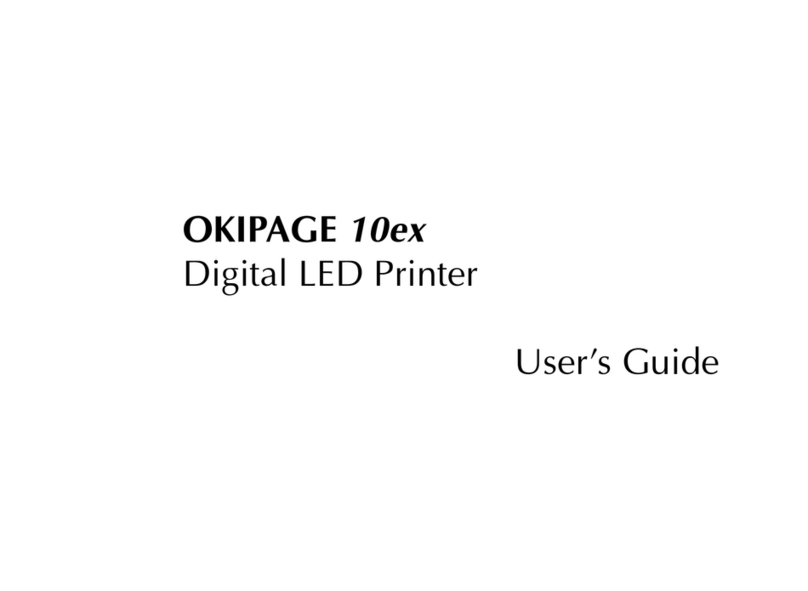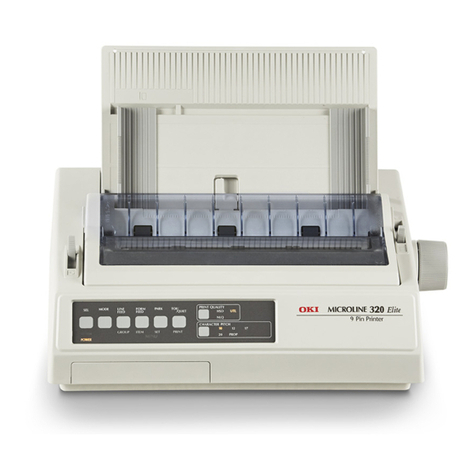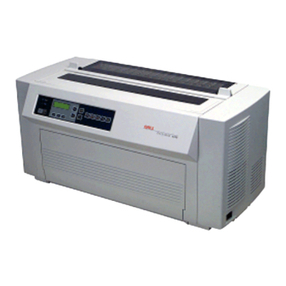
Page buffer Adds print information to the
analyzed receive data and stores
the resulted data.
Expandable
DLL/macro buffer Stores soft fonts and macro data. Expandable
Font cache buffer Stores bit map fonts generated by
the font rasterizer based on
scalable font information
Enable Expandable
(4) EEPROM
The EEPROM has a 4-kbit capacity and stores the following data.
• Menu data
• Various counter data (page counter, drum counter, fuser counter, etc.)
• Adjustment parameters (LED head drive time, print start position, etc.)
(5) LSI (MSM10S0050-015GS)
This LSI is connected to the CPU via the bus as a peripheral device of the CPU and controls the memory
based on the RAS signal and address signal received from the CPU.
(6) LSI (MBCE31701-040FP-BND)
This LSI is used as a peripheral device of the CPU and performs smoothing compensation (OST) of print
image data (300 dpi and 600 dpi). In addition, it transfers serially bit image data for each dot line to the
LED head.
(7) Host interface
This printer has the following interfaces to the host.
• Centronics bidirectional parallel interface
• RS232C serial interface
• OKI HSP interface (Option)
The single effective interface or the automatic interface select mode can be selected using the menu. If
the busy state of the printer continues for a long time period, the buffer near-full control releases the busy
status at constant intervals even if the host side is busy so not to cause the interface time-out at the host
side.
(a) Centronics bidirectional parallel interface
This is an interface conforming to IEEE-1284 and provides either unidirectional or bidirectional
communications according to each of the following communication modes.
• Compatibility mode
Unidirectional communications from the host to the printer.
• Nibble mode
This mode transmits 4-bit wide data from the printer to the host. In this mode, each 1-byte data is
transferred in the form of two nibbles using ERROR, BUSY, FAULT, and SELECT signal leads. This
mode can provide the bidirectional operation in combination with the compatibility mode.
• ECP mode
his mode provides the asynchronous bidirectional interface and transmits and receives 1-byte data
using eight data signal leads under the semi-duplex control by the host.
When the power is turned on, the compatibility mode is automatically selected. The change to another
mode from the compatibility mode is made through negotiation. (When the BI DIRECTION is set to
ENABLE in the menu, this change can be performed.) (For the electrical/physical characteristics of this
interface, see APPENDIX B)
(b) RS232C serial interface


